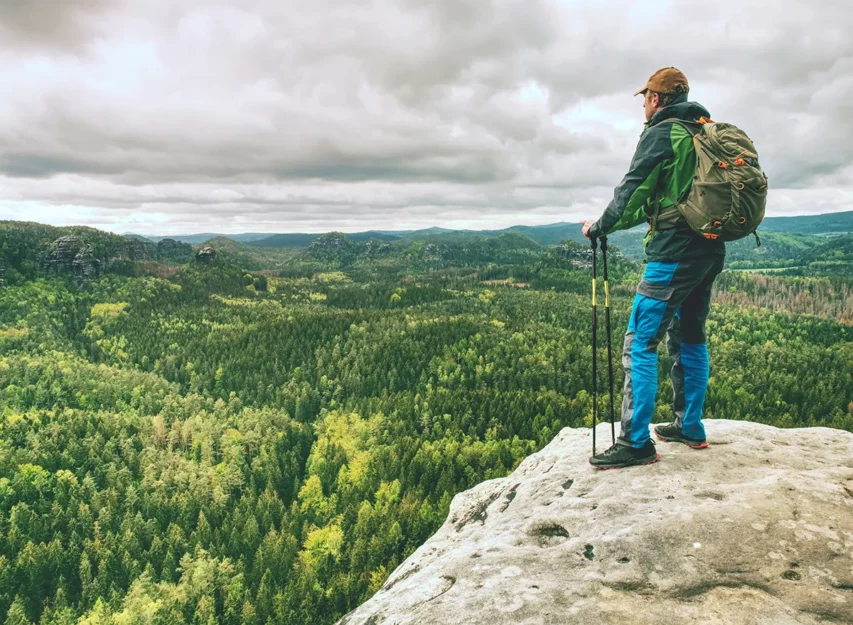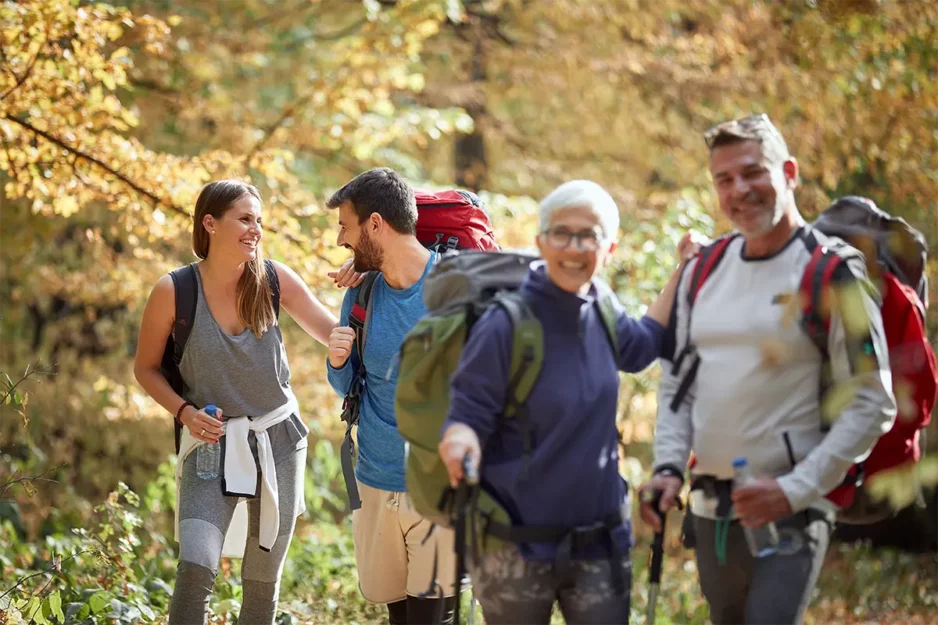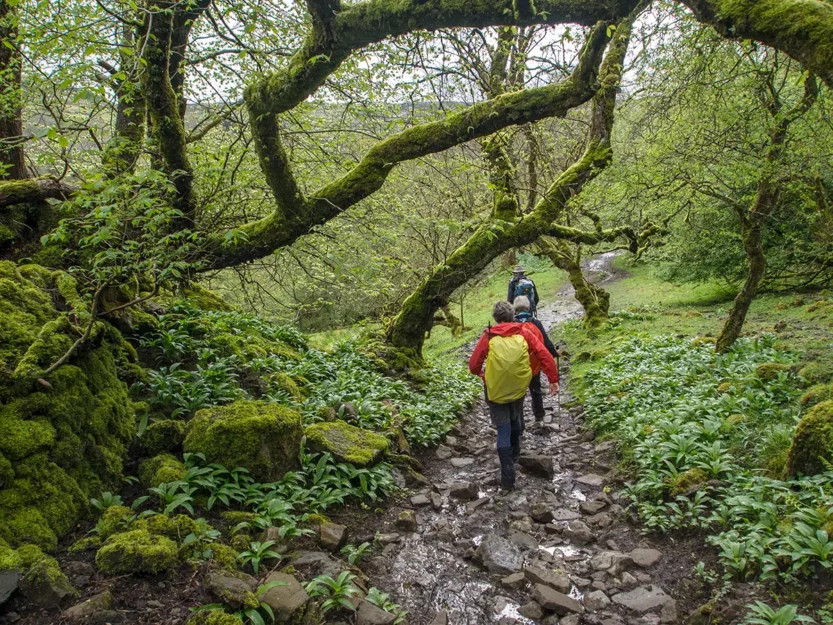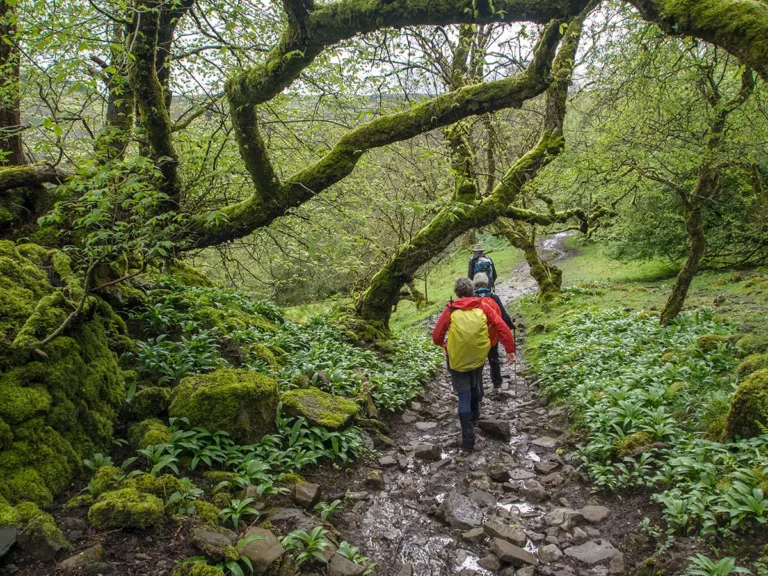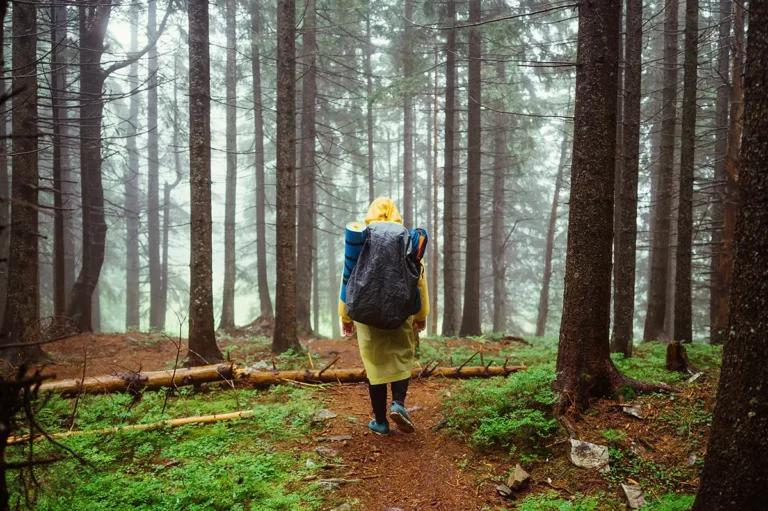Almost everyone has an old pair of jeans lying around. That trusted pair that somehow always looks better after being scuffed, dirtied, and ripped.
But choosing the proper hiking clothing isn’t just about durability and looks. Great hiking pants provide flexibility for gaping steps up boulders, breathability to prevent chafing from sweating, and material that protects against falls or harmful UV rays.
So, can you hike in jeans? Sure. When taking shorter hikes in exceptional weather, a loose-fitting, stretchable pair of jeans will work fine. But hiking in jeans is far from your best option.
This article details the pros and cons of hiking in jeans to help you decide if wearing your trusted pair will be the right decision for your next hike or if it’s time to invest in hiking pants.
The pros and cons of hiking in jeans
Hiking pants aren’t always necessary. Traditionally, I hike in shorts. Living in the Southwest, I usually hike in hot weather. When hiking on vacations, a great pair of joggers work perfectly.
Like most people, in my beginner days of hiking, I often wore what I had available: usually a pair of old jeans.
In the 1970s and 80s, hikers conquered the most challenging trails in jeans, but they were the most durable pants available at the time. Luckily, you have endless choices to provide a more comfortable, safer hiking experience.
Here are the pros and cons of hiking in jeans to help you decide what to wear on your next hike.
Pros of hiking in jeans
- Durable: Denim jeans can be worn regularly for years and stay in excellent condition. In fact, one college student wore the same jeans for 330 days straight, and they held up well.
- Easy to care for: After taking a beating, jeans can be washed and look new again.
- Protective: The durability of denim can protect your skin from heavy brush or scrapes from slips and falls.
Cons of hiking in jeans
- Breathability: You will sweat when hiking, and breathable pants dry sweat quicker, preventing chafing.
- Moisture absorbing: Denim cotton jeans soak in sweat and water, causing them to become heavier and more uncomfortable.
- Slow drying: Denim jeans take three to four hours to dry in good weather, making for a very uncomfortable hike in wet conditions.
- Poor insulation: In cold weather, jeans don’t have the same insulating properties synthetic hiking pants and joggers do.
- Restrict movement: Jeans are constricting, making climbing and taking large steps challenging.


Are hiking pants necessary?
When first getting started hiking, spending $65 to $100 on hiking pants seems unnecessary, and it usually is. The same goes for footwear and wearing cross-trainers before purchasing a pair of boots.
But there are better options than a pair of jeans for hiking, such as non-cotton versions of:
- Joggers
- Gym shorts
- Cargo pants
- Leggings
- Workout tights with shorts over
However, if hiking is a hobby you plan to enjoy for years to come, consider investing in the proper gear today.
Advantages of hiking pants
The line between hiking pants, joggers, and trainers is blurred these days. When searching for hiking pants on popular outdoor retail sites, you’ll find plenty of comfortable joggers and hybrid options — begging the question, what makes a pant a hiking pant?
Traditional hiking pants typically share these features:
Blended fabric
Hiking pants are made of blended fabrics, commonly nylon and spandex.
Convertibility
It’s common for hikes to start cold only for the sun and strenuous trekking to cause you to sweat quickly. Hiking pants often feature zip-off legs to convert pants into shorts.
Water repellent
Quick drying and water-repellent fabric allow you to cross creeks, hike through rain, and sweat while remaining comfortable.
Several pockets and carabiner loops
Comfortably keep your phone, GPS, bag of trail mix, towel, keys, and wallet in hiking pants.
Lightweight and stretchable
An excellent hiking pant should weigh less than jeans while providing a durable stretch for ease of movement.
Tips for hiking in jeans
If the pros and cons of hiking in jeans didn’t convince you to buy a pair of hiking pants, here are some tips for wearing jeans on your upcoming hike:
- Wear loose-fitting jeans
- Wear workout leggings underneath
- Avoid water
- Keep your hikes short
- Hike in ideal climates (not too hot, cold, or humid)
Final thoughts
Many new hikers don’t continue their hiking journeys due to the pain and discomfort caused by their last hike. Without the right gear, you increase your risk of numb toes, cramping, hip pain, and unbearable discomfort.
For a better beginner hiking experience, consider the following:
- Hiking well-maintained out-and-back trails.
- Avoiding large elevation climbs.
- Taking short hikes no longer than 3 miles.
- Stretching before and after your hike.
- Stopping for water and snack breaks often.
- Hiking to breathtaking scenery.
Too often, hikers jump into a demanding hike, only to never try again.
If I could only choose one piece of advice for new hikers, it would be to find your zen feature. Do you love waterfalls, breathtaking panoramic views, historic petroglyphs, or beautiful wildlife?
Hike to it, and the memorable experience will far outweigh any discomfort.
Have a safe, fun hike!
Are these pros and cons of hiking in jeans helpful? Share it with others to help prepare them for their next hike.


